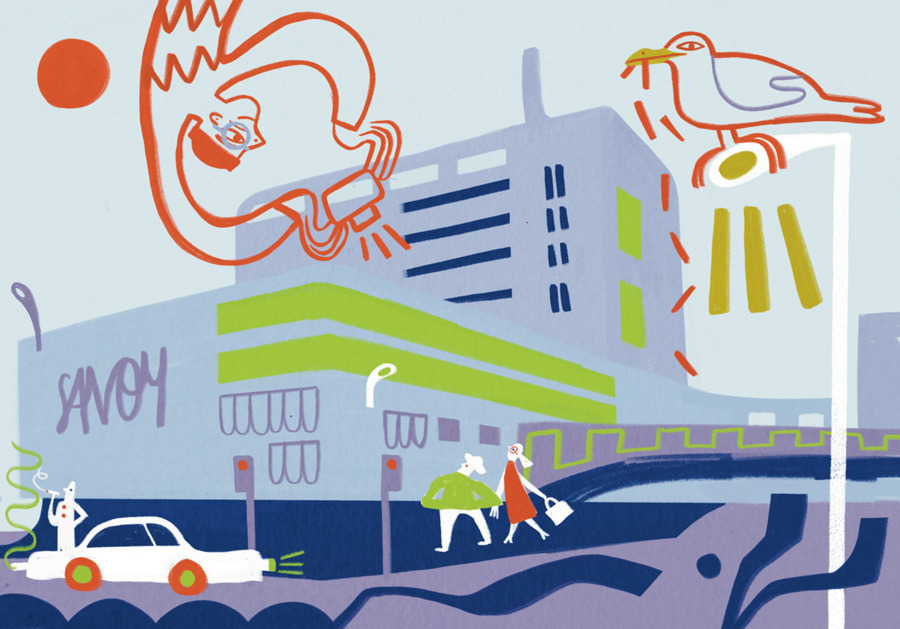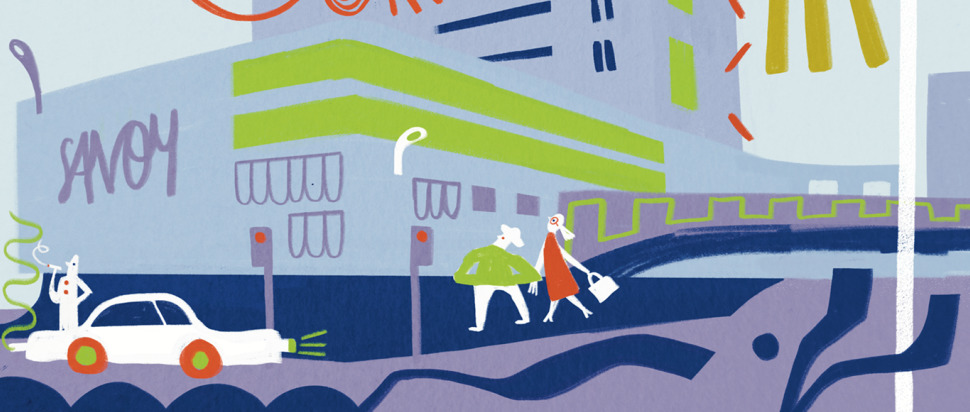Regional Retail Therapy: The forgotten value of Scottish shopping centres
Weekend hours spent under the fluorescent lighting of suburban consumerism – count us in. One writer hails the brilliance of ageing Scottish shopping centres as a social hub, local treasure and provider of good old-fashioned tat
The globalised retail and leisure experience is a numbing one. With transplanted American design, most Scottish shopping centres have been modernised and maximised to become arenas of multinational homogeny. In the name of qualitative upgrade we have developed a teleological taste for the uncanny. I believe we have been impoverished by a false idea of new-and-improved expansion, with the glossy renovations, at least for me, inspiring only grim resignation and spiritual vacuity. We forget the value and charm of the more basic: the few older Scottish shopping centres that have managed to evade the complete conglomerate makeover.
A day or afternoon of leisure is now a predetermined trip, in replicate, in every corner of the country: the St James Quarter in Edinburgh is The Bullring in Birmingham is the St. David’s Dewi Sant in Cardiff is Victoria Square in Belfast is Westfield in London (and every smaller, suburban retail park is working up to this up-market uniform too). Everything is Wagamamas. Everything is Zara. Everything is Five Guys. Everything is the tinny sound bath of chart radio. Jesus – and Michael Moore – wept. How did the world go from Grecian agoras to this franchised debasement? You try to enter with a Bourdainian open-mindedness but inevitably leave with a Baudrillardian dismay. Overstuffed and desensitised by the superfluity, these ballrooms of excess stomp out any regional specificity and novelty – a Shake Shack should not supplant a Blue Lagoon. Remember your roots!
Consider The Forge Shopping Centre at Parkhead (various internal organs of which endure a seesawing threat of foreclosure), Springburn Shopping Centre, and the Paisley Shopping Centre, where humble outlets like The Works and Peacocks are still king. Sure, they are still sizable, boxy impositions – compromised square feet that could have remained a bucolic field – but they aren’t the size of a small kingdom. I lobby for their soft serve capitalism – they retain a sense of proportion and integrity; they are a controlled beast. They still comprise some high street titans like JD and Primark (but just as Luca Guadagnino saw Applebee’s as a site of romance in Challengers (2024) - “I love the practicality of America, I think it’s fantastic” – there is some beauty and excitement to be distilled from a chain here and there). Crucially these spaces do not welcome a wholesale domination of chains and high tariff-goods; they’re more bargain bin than Breitling, Bodycare before Aesop. Notably, it is only in these spaces that those nebulous, small independent shops whose unique selling point is simply cheap miscellanea still get a chance at life – you know the ones where it’s all plastic curios and tartan paraphernalia. Oh, the prelapsarian shopping experience.

Illustration by Magda Michalak.
I’d argue that the 70s-and-80s-built structures and interiors of these Scottish shopping centres now appearing as superannuated and influencer-resistant compounds appeal. Take The Savoy Centre: ghostly in a way that would inspire a great neo-gothic novel; liminal in a way that would exacerbate an already troubling hallucination. That’s real ambience, baby. That’s engaging your senses. It’s honestly cinematic: with low-ceilings, morgue lighting, and some vacant ‘To Let’ spaces, it’s like set dressing for 28 Days Later (2002). Revel in its Brutalist carapace and its random, handy units; whether it’s a McGhee’s roll, a random piece of fabric, a wig, or a high vis vest you need, they’ve got it. And the character of Buchanan Galleries, though more modern, was validated when it attracted the attention of Jonathan Glazer, for Under The Skin (2013). (Note: it has so far dodged demolition and redevelopment plans.)
There is, undeniably, a deep sense of moral rot to the proliferation of these maxi-malls. When I walk through these spaces, I see bright lights and state failure. These glam galleries ostensibly service every utility and desire, but are no social good. Rather, they are sites of culture culling and damaging social impact. Sociologists have long lamented the diminishment of third places; which The Royal Institution of Chartered Surveyors define as “a publicly accessible location where social interaction can happen... Locations where people can spend time without spending money.” There being few casual gathering spots outside of work, school, and home harms every demographic, but young people most significantly. As a young adult who feels disillusioned by the recreational options in front of me (see the pub crisis, as reported by The Guardian), I feel the frustrating weight of ennui, but for teens and tweens to be stunted at such a formative time of life is far more concerning. It should surprise no one that the result of dwindling youth centres is a generation of kids who are recreationally homeless. The sprawling modern mall has thus become a third place by force, but, hardly an inexpensive haven, they undermine the functional definition of the tertiary outlet. They are only nominally accessible, with scarcely two benches available in the interstitial corridors between storefronts that aren’t connected to an eatery. I applaud the smaller shopping centres for being considerably more hospitable to kids, even if that means simply trailing parents as they run errands – at least that’s character development.
So I say resist the monster malls. Repent. Find the quaint in the consecrated ground of the antiquated. Find love in a hopeless place.
